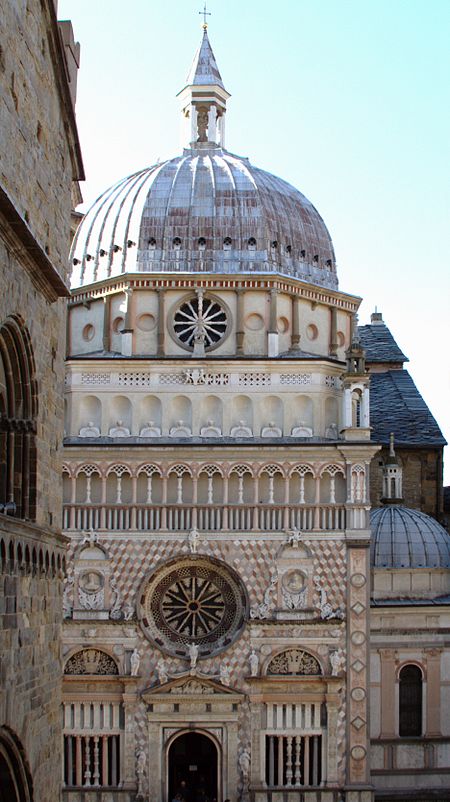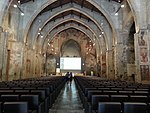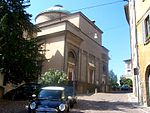Cappella Colleoni

The Cappella Colleoni (Italian: "Colleoni Chapel") is a chapel and mausoleum attached to the Basilica of St. Mary Major in the northern Italian city of Bergamo. Dedicated to the saints Bartholomew, Mark and John the Baptist, it was built between 1472 and 1476 as the personal shrine for the condottiere Bartolomeo Colleoni, a member of one of the city's most notable families, and his beloved daughter Medea. The site chosen was that of the church's sacristy, which was demolished by Colleoni's soldiers. Whether or not the demolition was authorized by church administrators remains the subject of scholarly debate among Italian historians. The design was entrusted to Giovanni Antonio Amadeo, whose plan respected the style of the church, as can be seen from the octagonal tambour of the dome and in the lantern cusp, as well as in the use of polychrome marbles.
Excerpt from the Wikipedia article Cappella Colleoni (License: CC BY-SA 3.0, Authors, Images).Cappella Colleoni
Via Arena, Bergamo Città Alta
Geographical coordinates (GPS) Address Nearby Places Show on map
Geographical coordinates (GPS)
| Latitude | Longitude |
|---|---|
| N 45.703416666667 ° | E 9.6622222222222 ° |
Address
Basilica di Santa Maria Maggiore
Via Arena
24129 Bergamo, Città Alta
Lombardy, Italy
Open on Google Maps











